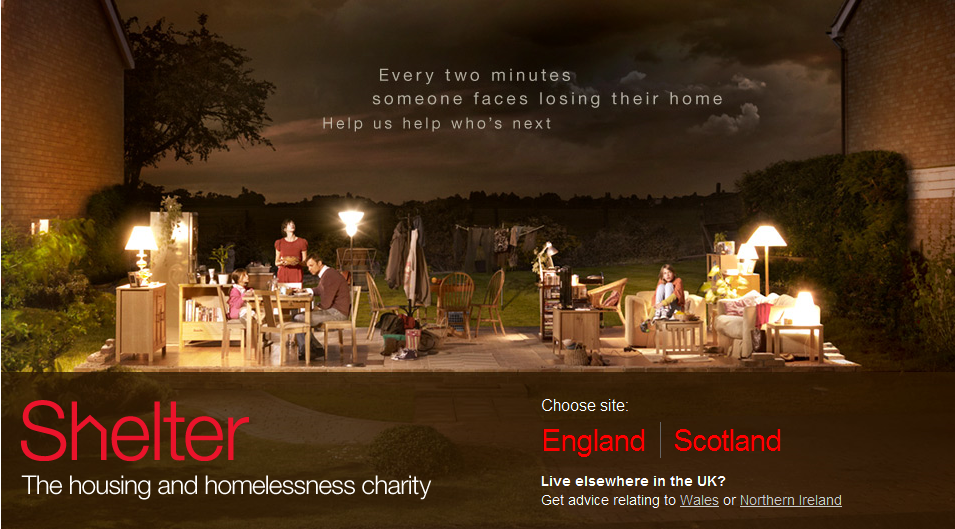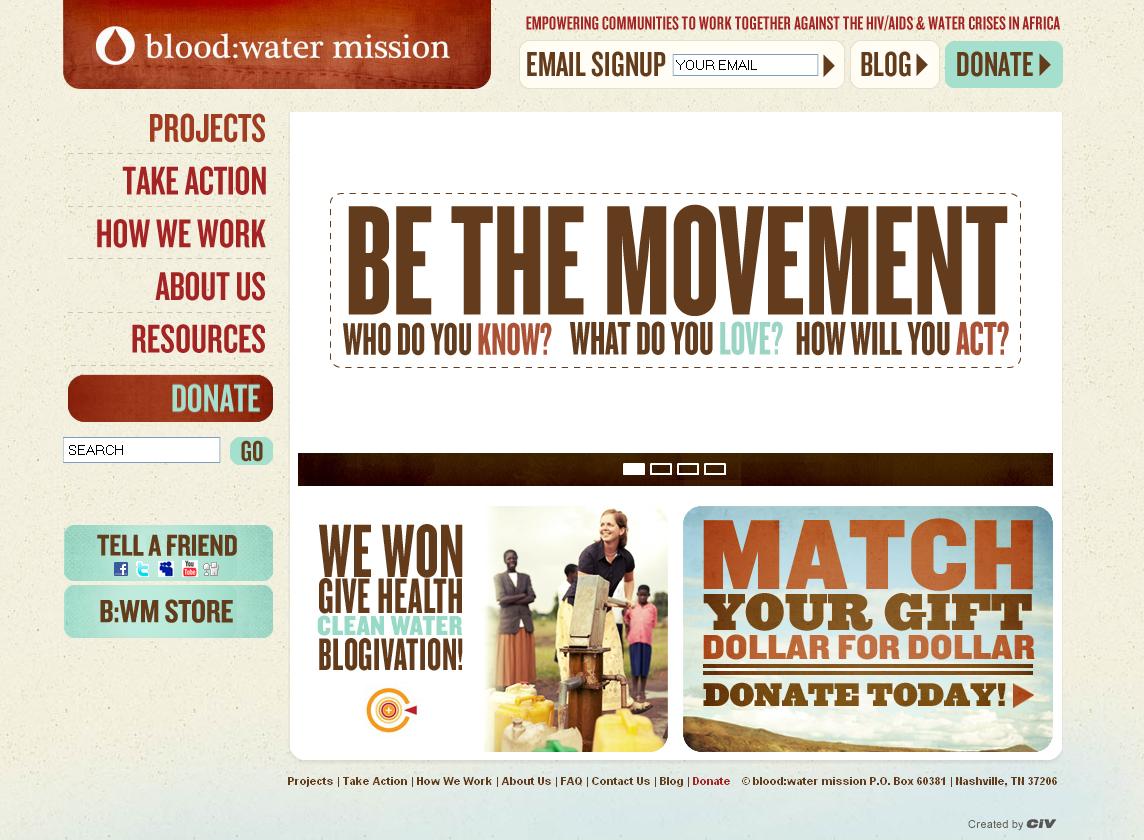Welcome to the first instalment in our five-part series of articles on Charity Website Design!
Our site design and promotion work with Bristol charity clients such as Above and Beyond and Alzheimer's Brace means that we're constantly reflecting on how charitable and not-for-profit organisations can use the internet to best effect.
Since the ultimate goal of a website is to sustain the charity by attracting funding, GWS have put together a list of objectives to be addressed to further this goal.
Leaving aside social media - since that's a topic on its own - we've been trying to whittle down what makes a good charity website.
Charity websites have evolved to showcase some of the best design work in the industry; check out this fantastic image on Shelter's homepage:

And the innovative use of text and colour used by Blood: Water Mission:

Briefly, the purpose of a charity website includes four objectives (depending on the charity, some of these points may be more relevant than others).
First objective.
To engage the public and get them interested and informed about the charity's activities and mission - this drives individual donations, which happen either directly through the site, or indirectly via fundraising events held by individuals.
Second objective.
To present a professional and focused profile to potential funders, like governments or grant foundations; this drives larger donations and helps to continue your operational work through long term funding partnerships.
Third objective.
To convey to professionals in your field your expertise and value, which helps your charity remain relevant and important and helps to attract staff, get you invited to conferences and speaking engagements, and supports your public relations campaign.
Fourth objective.
This is the most complex to achieve: conveying to the recipients of your charity - direct and indirect - why you are important to them and why they should work with you.
This is becoming increasingly important in the charitable world; the nature of foreign aid, environmental work and social care has, for many organisations, evolved from an (unspoken) hierarchical relationship into a partnership with those who benefit.
In other words, funders want to see input from all stakeholders and evidence of direct communication with recipients / beneficiaries in your work.
Likewise, beneficiary communities will appreciate evidence that your charity consulted with locals and/or affected individuals before you begin a project.
Both funders and those targeted by your charity will want to perceive through your website a commitment to working together with the recipients, not 'giving handouts', with an ultimate goal of sustained and meaningful change.
Coming up, we give some examples of well designed charitable websites to further illustrate how each of the four objectives can be achieved through design.
If you know of a great charitable website that you would like to recommend, please draw our attention to it through the comments below, or on Twitter or Facebook.
If you enjoyed this, continue to part 2 in our charity website design series, Ways to Attract Public Support.
